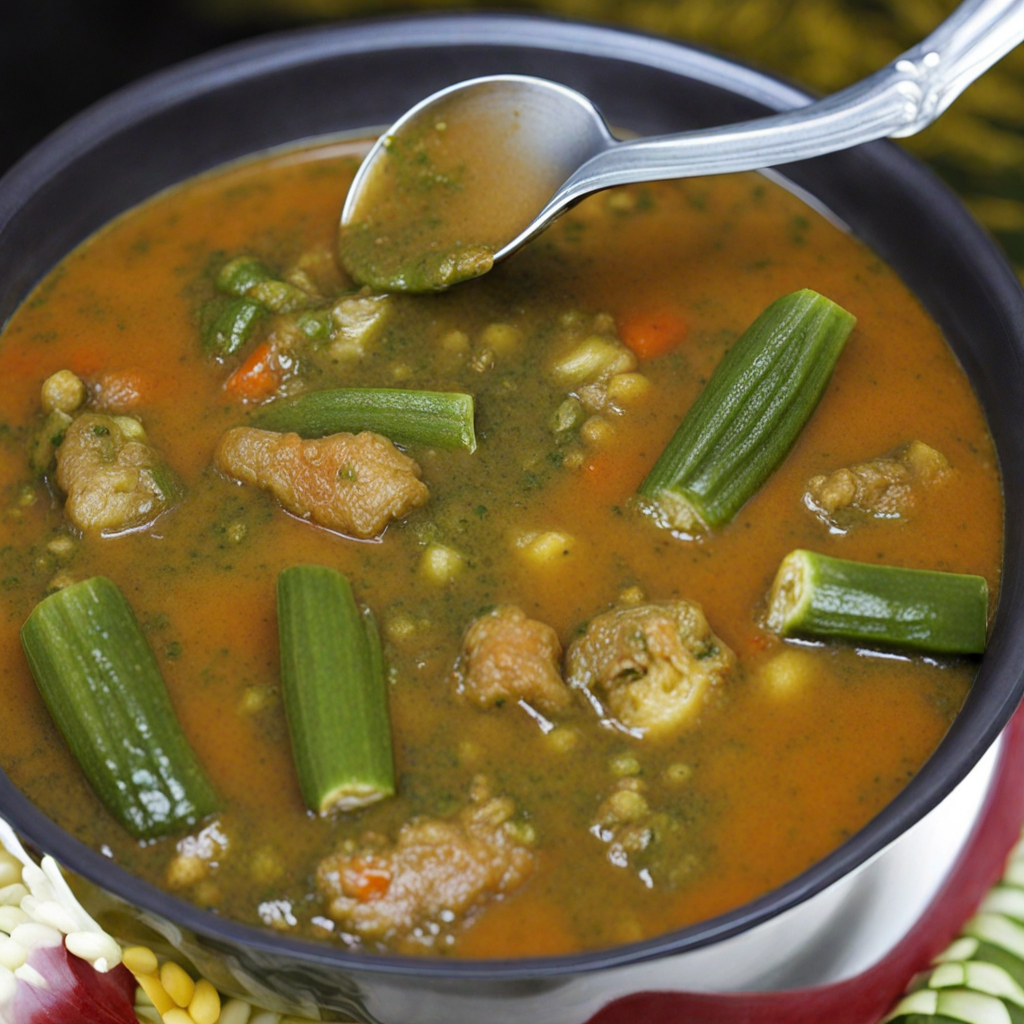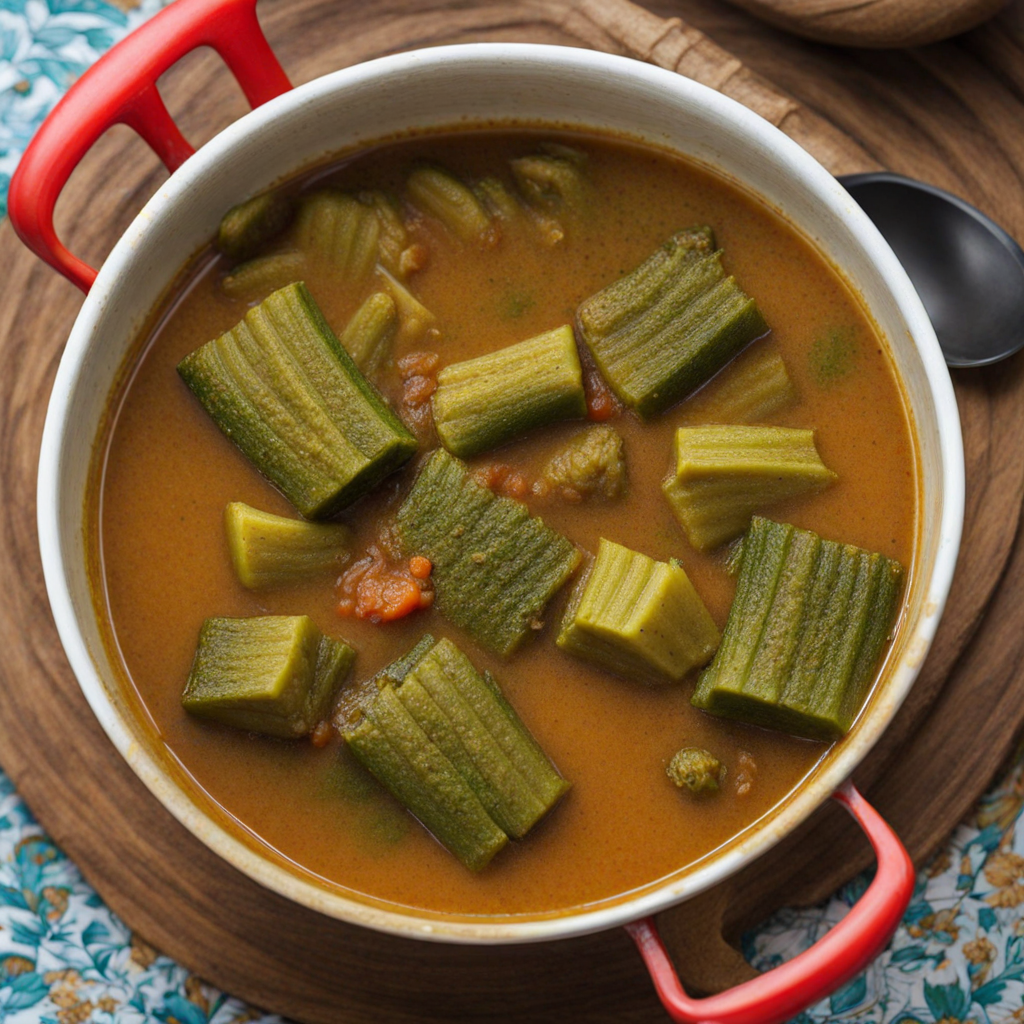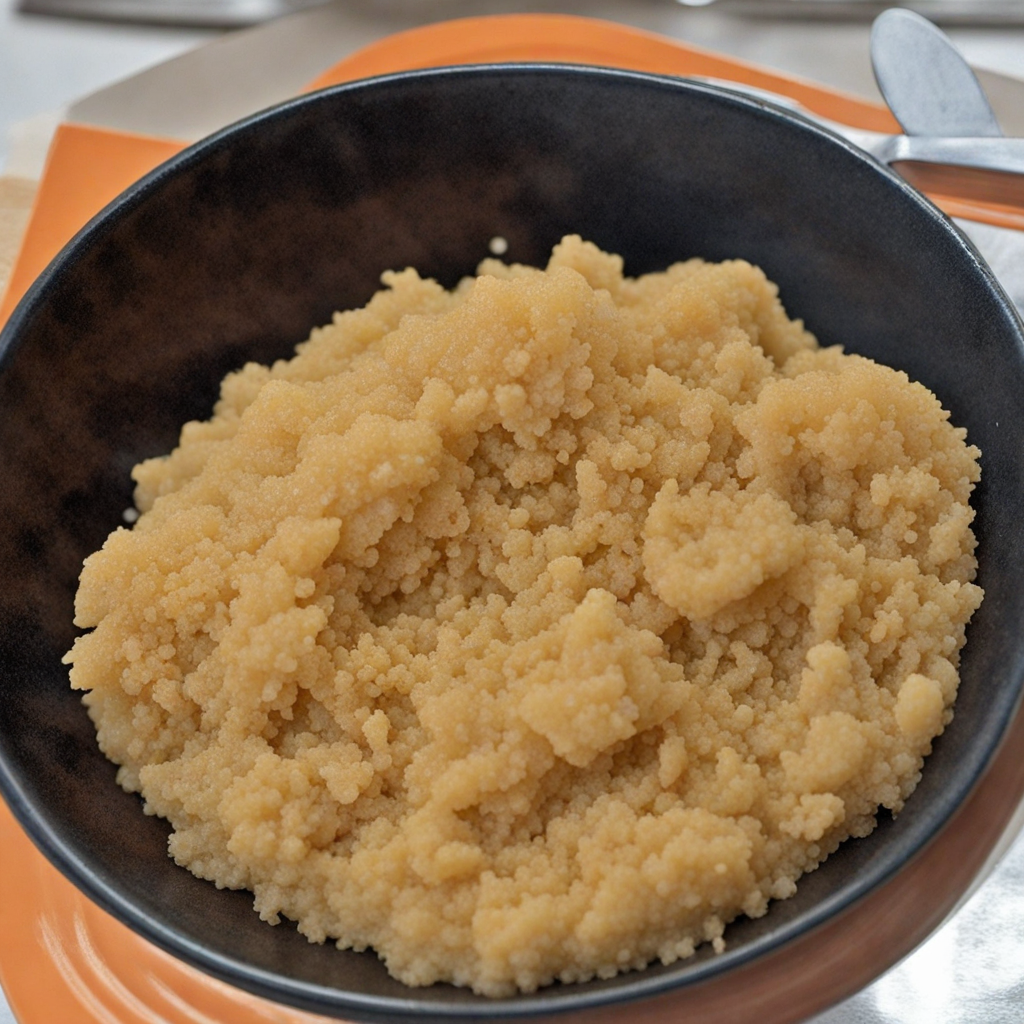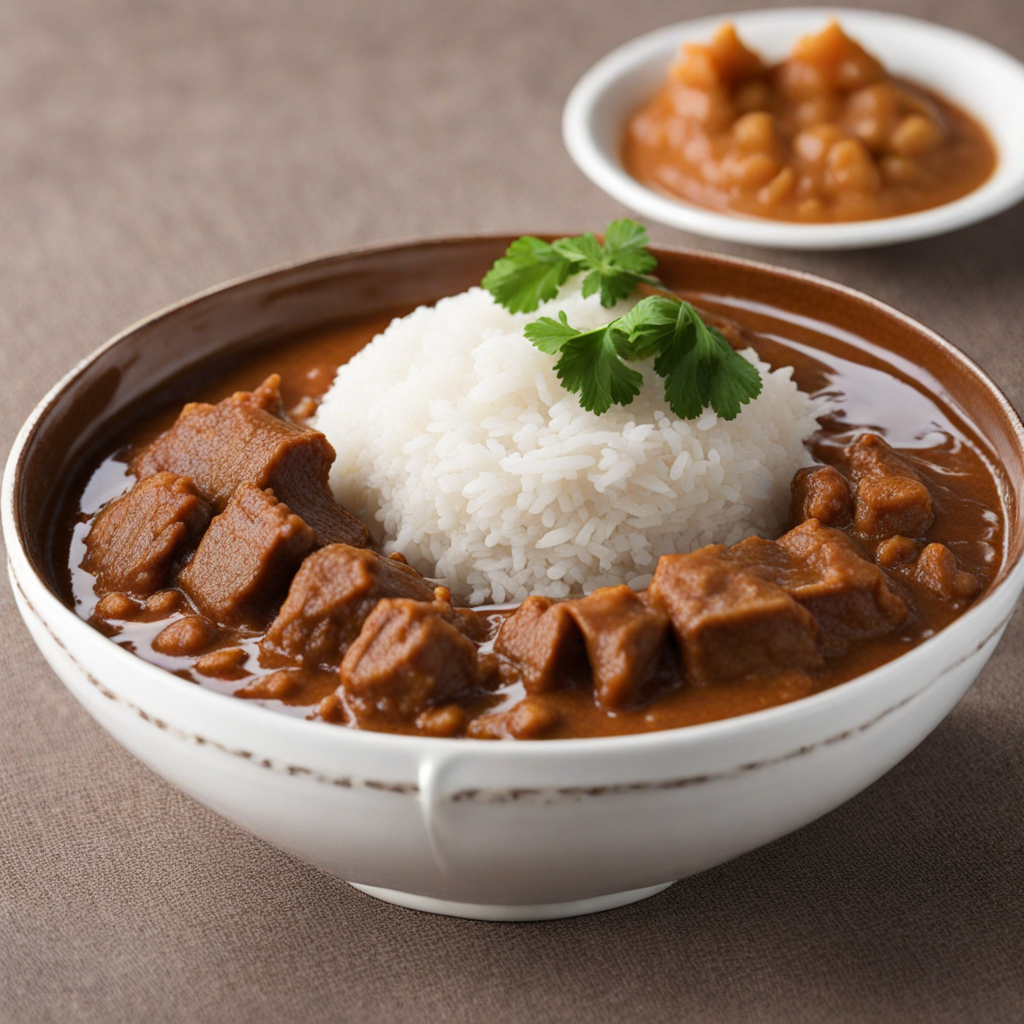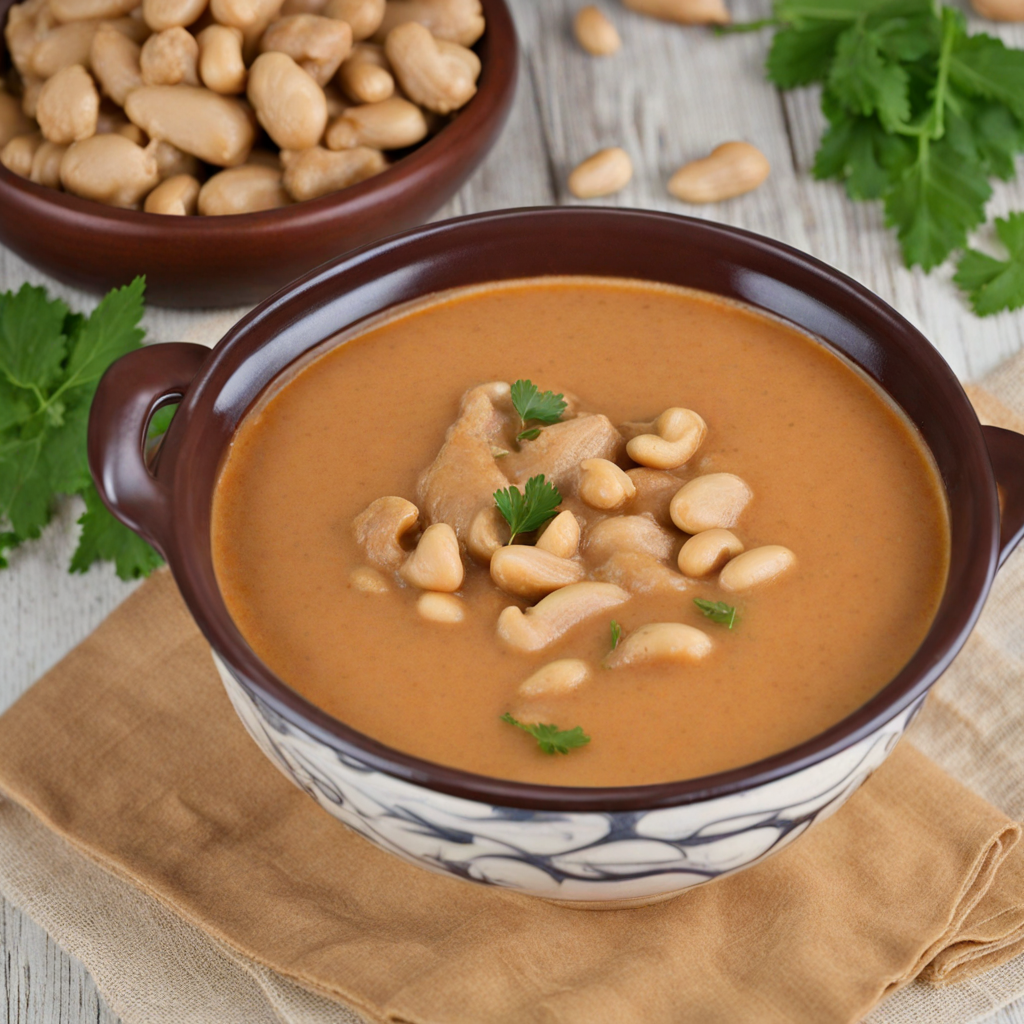Okra Soup
Okra Soup, a beloved dish from Guinea, is a vibrant and flavorful blend that showcases the unique taste of okra, a vegetable revered for its slimy yet satisfying texture. The soup is typically made with fresh okra pods, which are either sliced or blended to release their natural mucilage, creating a rich and thick consistency. This hearty base is often enhanced with a variety of spices, including garlic, onion, and chili, which add depth and warmth to the dish. The combination of these ingredients creates an aromatic experience that is both comforting and invigorating, inviting food lovers to explore its complex flavors. In Guinea, Okra Soup is commonly prepared with an assortment of proteins, such as fish, chicken, or beef, which are simmered to infuse the broth with their savory essence. The proteins not only contribute to the soup's richness but also balance the dish, making it a satisfying meal on its own. Vegetables like tomatoes and leafy greens may also be added, further enhancing the nutritional value and bringing a burst of color to the bowl. The result is a harmonious blend of flavors, where the earthiness of the okra meets the umami of the meat and the freshness of the vegetables. Typically served with rice or fufu, a starchy side made from cassava or plantains, Okra Soup is a communal dish meant to be enjoyed with family and friends. The soup is often ladled generously over the starch, allowing the flavors to meld beautifully. Diners are encouraged to use their hands to scoop up the meal, creating a tactile and engaging dining experience. For those seeking to expand their culinary horizons, Okra Soup from Guinea offers an exciting opportunity to savor a dish that is both nourishing and steeped in rich cultural traditions.
How It Became This Dish
Supakanja: A Culinary Journey Through Guinea Supakanja, a traditional dish originating from Guinea, embodies the rich tapestry of West African culinary heritage. This hearty and flavorful dish is primarily made from a base of ground peanuts, often combined with a variety of vegetables, spices, and sometimes animal proteins, making it a versatile and nutritionally dense meal. To understand the significance of Supakanja, we must delve into its origins, its evolution over time, and its cultural importance in Guinean society. Origins of Supakanja The roots of Supakanja can be traced back to the indigenous peoples of West Africa, where the cultivation of peanuts—known as groundnuts—has been practiced for centuries. Peanuts are believed to have originated in South America, but they were brought to Africa during the transatlantic slave trade. Once in West Africa, they quickly became integrated into local diets, thriving in the region's climate and soil. By the time Guineans began to adopt peanuts into their cuisine, they had already developed a deep culinary tradition that celebrated local ingredients. The name "Supakanja" itself reflects the dish's essence. "Supa" translates to "soup" or "stew," while "kanja" refers to the groundnut or peanut. This nomenclature hints at the dish's base, emphasizing the crucial role of peanuts in its preparation. Over time, Supakanja evolved to incorporate various regional ingredients, showcasing the interplay between local agriculture and culinary traditions. Cultural Significance In Guinea, Supakanja is more than just a meal; it represents community and cultural identity. Traditionally, the dish is prepared during gatherings, celebrations, and significant events, reinforcing social bonds among family and friends. It is often enjoyed with rice or served alongside fufu, a starchy side dish made from cassava or yam, creating a filling and satisfying meal. The communal aspect of Supakanja is vital in Guinean culture. The preparation often involves multiple family members, with each person contributing their skills to the process. This collective effort fosters a sense of unity and shared heritage. As families prepare Supakanja together, they pass down recipes, stories, and culinary wisdom from generation to generation, ensuring that the dish remains a living tradition that adapts yet retains its core identity. Moreover, Supakanja holds a place in various cultural ceremonies. It is often served during weddings, festivals, and religious gatherings, symbolizing prosperity and good fortune. The dish's rich flavors and diverse ingredients reflect the abundance of the land and the culinary creativity of the Guinean people. Development Over Time As Guinea has evolved, so too has Supakanja. The dish has adapted to changing agricultural practices, globalization, and culinary trends. Traditionally, the ingredients used in Supakanja were sourced locally from gardens and markets. However, as global trade networks expanded, new ingredients began to find their way into the dish. Spices from North Africa, such as cumin and coriander, and vegetables like bell peppers and carrots have made their appearances in modern interpretations of Supakanja, enhancing its flavor profile and nutritional value. The advent of modern technology has also influenced how Supakanja is prepared. In rural areas, traditional cooking methods are still prevalent, with wood-fired stoves and clay pots being the norm. However, urbanization has led to the introduction of gas stoves and electric appliances, which have made cooking faster and more efficient. Despite these changes, the essence of Supakanja remains intact, as families continue to celebrate their culinary heritage while embracing contemporary conveniences. In recent years, the globalization of food culture has also contributed to the popularity of Supakanja beyond Guinea's borders. As diasporic communities spread across the globe, they bring their culinary traditions with them, introducing Supakanja to new audiences. Food festivals, restaurants, and cultural events have showcased this dish, allowing it to gain recognition and appreciation in diverse culinary landscapes. This cross-cultural exchange has led to exciting adaptations of Supakanja, with chefs experimenting with fusion flavors while respecting its traditional roots. Modern Variations Today, Supakanja is not limited to a single recipe; it has diversified into various regional and personal interpretations. Some families might choose to include chicken or fish for added protein, while others may stick to a vegetarian version, making the dish accessible to a broader audience. Additionally, health-conscious adaptations have emerged, focusing on reducing fat content or incorporating more vegetables to align with modern dietary preferences. With the growing interest in plant-based diets and sustainable cooking, Supakanja's foundation of peanuts and vegetables positions it as a nutritious option. Peanuts, rich in protein and healthy fats, contribute to the dish's popularity among those seeking meat alternatives. This aspect of Supakanja resonates with contemporary movements toward healthier eating and environmental sustainability. Conclusion Supakanja is a vibrant testament to Guinea's culinary heritage, encapsulating the history, culture, and agricultural richness of West Africa. Its evolution reflects the adaptability of traditional dishes in the face of changing times and tastes, while its cultural significance remains steadfast as a symbol of community and shared identity. From its humble origins as a local dish to its recognition on global culinary platforms, Supakanja continues to inspire chefs and home cooks alike. As it travels beyond the borders of Guinea, it carries with it the stories of the people who have lovingly prepared it for generations. In every bowl of Supakanja, one can taste the history of a nation, the diversity of its ingredients, and the warmth of its communal spirit—a delicious reminder of the power of food to connect us all.
You may like
Discover local flavors from Guinea


